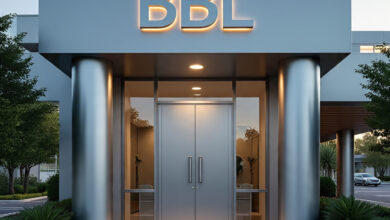How to Know If You Need Revision Rhinoplasty

Rhinoplasty is one of the most commonly performed facial surgeries, designed to improve the shape, size or function of the nose. While many patients are satisfied with their initial surgery, others may feel their results did not meet expectations or that new issues have arisen. In such cases, revision rhinoplasty may be necessary.
This guide will help you understand when to consider revision rhinoplasty, what the procedure involves, and how London facial plastic surgery clinics approach this delicate surgery.
Understanding Revision Rhinoplasty
What Is Revision Rhinoplasty?
Revision rhinoplasty is a secondary nasal surgery performed to correct or improve the results of a previous rhinoplasty. It can be done for cosmetic or functional reasons—or both. The complexity of revision rhinoplasty is generally higher than that of a primary procedure, due to scarring, altered anatomy, and the need for tissue grafts in some cases.
Why Is It More Complex?
Unlike primary rhinoplasty, revision procedures involve working with scar tissue, previous surgical changes, and often limited cartilage. This demands a high level of skill and experience, which is why it’s essential to choose a surgeon specialising in revision rhinoplasty in London.
Signs You May Need Revision Rhinoplasty
Persistent Breathing Difficulties
One of the most common reasons patients seek revision surgery is difficulty breathing after their first rhinoplasty. This can occur if the nasal valves are weakened or if too much cartilage was removed during the first operation. If you notice ongoing nasal blockage or snoring, it may be time to consult a specialist.
Cosmetic Dissatisfaction
Not all rhinoplasty results match patient expectations. Issues like a drooping nasal tip, asymmetry, bumps on the bridge, or overly narrow nostrils can lead to dissatisfaction. These concerns are legitimate and can often be corrected through a secondary procedure.
Overcorrection or Undercorrection
Sometimes, a rhinoplasty may go too far in reshaping the nose—or not far enough. For example, removing too much cartilage can result in a collapsed nose, while minimal changes may leave the original problem unresolved. Either scenario may justify revision surgery.
Visible Scarring or Irregularities
Scars, dents, or visible deformities can develop after the initial surgery, especially if healing was complicated. If these irregularities affect your confidence or appearance, a facial plastic surgeon can assess whether revision rhinoplasty is the right option.
Timing Considerations
How Long Should You Wait?
It’s usually recommended to wait at least 12 months after the original surgery before undergoing revision rhinoplasty. This allows the tissue to fully heal and settle, giving the surgeon a clearer picture of what needs to be corrected.
Exceptions to the Rule
In some cases, such as when a major breathing issue occurs or the nose becomes structurally unstable, earlier intervention may be necessary. Always consult with a qualified surgeon to determine the appropriate timing.
What Happens During a Revision Rhinoplasty Consultation?
Comprehensive Evaluation
A consultation with a London facial plastic surgery expert will include an in-depth evaluation of your medical history, photos, nasal structure, and skin thickness. This helps the surgeon understand the current condition of your nose and what can realistically be improved.
Setting Realistic Goals
It’s important to have open and honest conversations about what you hope to achieve with revision surgery. In many cases, the goal is improvement rather than perfection. Your surgeon will help you understand the likely outcomes and any limitations based on your nasal anatomy.
Discussion of Surgical Approach
Depending on the complexity, revision rhinoplasty may be performed using an open or closed approach. The open technique gives greater visibility for the surgeon but involves a small incision at the base of the nose. The closed technique, while more discreet, may not provide enough access for complex revisions.
How London Surgeons Approach Revision Rhinoplasty
Use of Cartilage Grafts
In revision cases, additional cartilage may be needed to rebuild or reshape the nose. Surgeons may harvest cartilage from the ear or rib if the nasal cartilage is insufficient. This helps restore structure and improve both function and aesthetics.
Managing Scar Tissue
Scar tissue from the first surgery can make the revision more challenging. Skilled surgeons use specialised techniques to carefully remove or work around scarring, ensuring a smooth and even result.
Balancing Form and Function
The best revision rhinoplasty outcomes are those that restore the nose’s appearance while also improving breathing. London facial plastic surgery clinics often take a dual approach—addressing internal nasal structure and external shape to ensure long-term success.
Risks and Considerations
Potential Risks
Like any surgery, revision rhinoplasty carries risks such as bleeding, infection, prolonged swelling, and unsatisfactory results. However, when performed by a qualified specialist, complications are rare and manageable.
Emotional Readiness
Undergoing a second surgery can be emotionally taxing. It’s important to be mentally prepared and have realistic expectations. Speaking to others who’ve undergone revision rhinoplasty or joining support groups can be helpful.
Conclusion
Revision rhinoplasty can be a highly rewarding procedure for those who are unhappy with the results of their initial nose surgery. Whether you’re dealing with breathing problems, cosmetic concerns, or a combination of both, a consultation with an experienced revision rhinoplasty specialist in London can offer clarity and solutions.
By understanding the signs, setting realistic expectations, and choosing a skilled surgeon, you can take the right steps towards improving both your nasal function and overall confidence.



